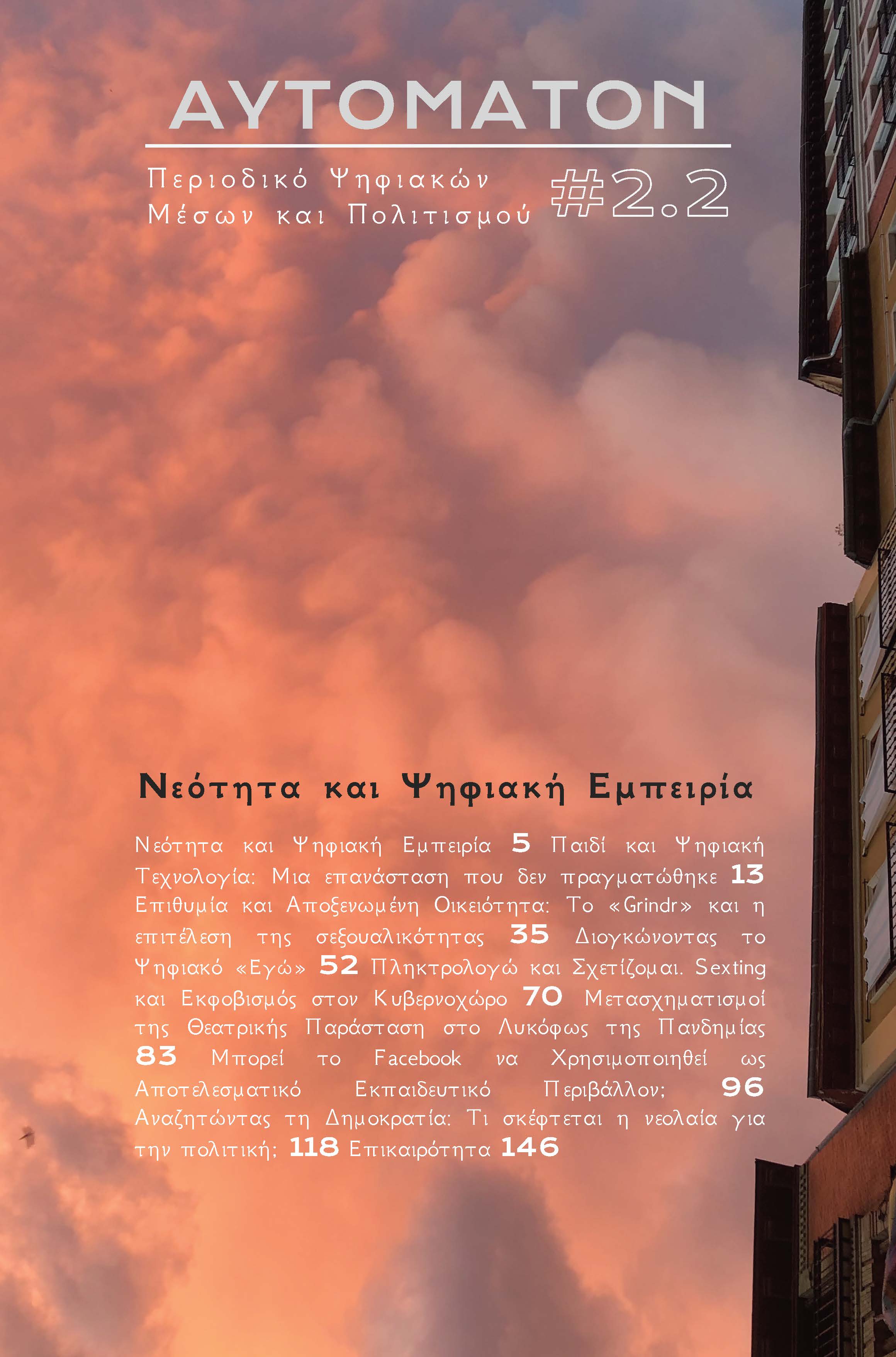Inflating the Digital Ego A critical approach to narcissism on social media networks through a digital artwork

Abstract
With the advent of World Wide Web 2.0 and the subsequent rise of the social media networks’ popularity, the construction of a subject’s digital identity has evolved into an integral part of their social life. In this context, we observe an over-exposure of an edited version of the digital self and a forged virtual happiness, that often feeds the users’ narcissistic behaviors. Scholars study the reciprocal relationship between narcissism and social media activity, while digital artists take a critical stance on technologically mediated social interactions and power asymmetries produced at social networks. This article introduces the artwork inflated_ego which critically approaches these issues, focusing on the overexposure of an idealized image of oneself and the ceaseless effort of social media users to elicit positive reactions from their peers. The artwork consists of a data-driven interactive installation, which is transformed dynamically in response to real-time data retrieved from “Facebook”. The article discusses the relation between social media and narcissism, as well as the relationship between the overexposure of the quantified self and dataveillance. Then it presents the digital artwork inflated_ego and discusses how digital artworks can potentially provoke critical thinking on the aforementioned issues.
Article Details
- How to Cite
-
Antonopoulou, C. (2023). Inflating the Digital Ego: A critical approach to narcissism on social media networks through a digital artwork. Αutomaton: Journal of Digital Media and Culture, 2(2), 52–69. https://doi.org/10.12681/automaton.35473
- Section
- Articles

This work is licensed under a Creative Commons Attribution 4.0 International License.
Authors wishing to publish articles in this journal agree to the following terms:
1. The Authors retain the Copyright and grant the journal the right of first publication while at the same time the copyright of the work is protected under the Creative Commons Attribution License which allows third party licensees to use the work as they wish provided they acknowledge the work's authorship and initial publication in this journal.
2. Authors may enter into separate additional contractual arrangements for the non-exclusive distribution of the published journal version of the work (for example, posting it to an institutional repository or publishing it in a book), with acknowledgment of its initial publication in this journal.
3. Authors are allowed and encouraged to post their work online before and during the submission process (e.g. on their website) as this can lead to productive exchanges as well as earlier and more citations of published work (See The Effect of Open Access).


